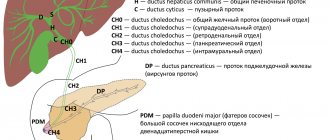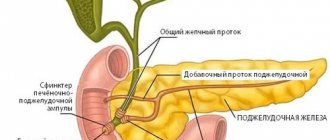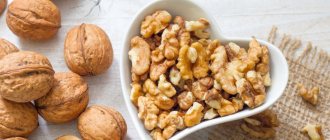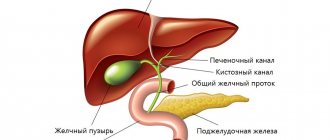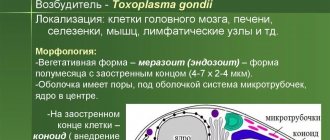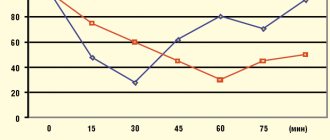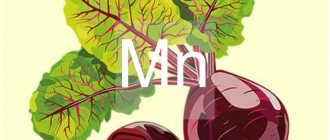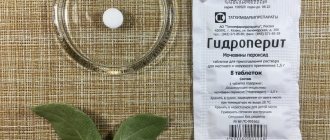Choleretic tea: Pixabay Medicinal plants are the main means of traditional medicine. Her work is used by professional doctors. Therefore, choleretic herbs are often prescribed to prevent diseases of the digestive system. Certain herbs can cure and prevent bile stagnation. The article provides information about which choleretic herbs for bile stagnation have proven effective and how to drink them correctly, as well as possible contraindications for their use. Read and be healthy.
Pharmacodynamics and pharmacokinetics
Pharmacodynamics
The plant components of the collection have choleretic, antispasmodic and anti-inflammatory effects. The rich composition and versatile action allows the collection to be used for various concomitant diseases of the gastrointestinal tract.
Menthol is the main component of peppermint oil, has a choleretic effect and enhances intestinal motility.
Yarrow herb has a choleretic, anti-inflammatory, antispasmodic effect, and also enhances the secretion of gastric juice.
Marigold flowers have pronounced bactericidal properties, they are used as an antispasmodic, promote increased bile formation and secretion, and enhance the secretion of gastric juice.
Chamomile flowers are known for their antiseptic and anti-inflammatory effects and are used for flatulence, diarrhea , gastritis with low acidity, colitis and intestinal spasms.
Tansy flowers have a choleretic and antispasmodic effect, improve appetite and digestion. It is used for gastritis with low acidity, diarrhea , intestinal inflammation and flatulence .
Pharmacokinetics
Data not provided.
Restrictions and contraindications
Herbal medicine is not carried out in case of individual intolerance to the plant, during pregnancy and breastfeeding.
The use of any plants is prohibited under 12 years of age, unless they are part of special children's fees. People with a predisposition to developing allergic reactions should be careful.
An absolute contraindication is cholelithiasis. The use of infusions with a hepatic-choleretic effect will provoke the passage of the stone. If it is large, then there is a high probability of damage and even rupture of the bile duct, opening internal bleeding.
Choleretic collection No. 3, instructions for use (Method and dosage)
The decoction is taken orally 1/3-1/2 cup three times a day 40 minutes before meals. The course of treatment is up to 4 weeks. To prepare the infusion, take 2 tbsp. spoons of raw materials per 200 ml of hot water. In an enamel bowl, heat in a water bath for 15-20 minutes, then leave for 35-45 minutes. The raw materials are squeezed out, the infusion is brought to a volume of 200 ml with water. The prepared infusion must be shaken before each use. It has a bitter taste, slightly astringent.
Two filter bags are poured with 100 ml of boiling water and left for 15-20 minutes. For better extraction, press the bags several times with a spoon. After squeezing them, the volume of infusion is adjusted to 100 ml with water. Take 0.5 cups three times a day before meals.
Sources
- Gadzhieva N.N., Faradzhev S.A., Makhmudzade F.M. Radionuclear, microelement composition and radiation sterilization of the harmala Peganum Harmala of Absheron - International scientific journal alternative energy and ecology 2009, 7, 120-125.
- Karomatov I.D. Glossary reference book on oriental medicine and alternative methods of diagnosis and treatment for general practitioners - Tashkent, Fan, 2010, 284 p.
- Budantsev A.L. Plant resources of Russia: Wild flowering plants, their component composition and biological activity. T. 5. Family Asteraceae (Compositae). Part 2. genera Echinops -Youngia. St. Petersburg; M.: Partnership scientific. ed. KMK, 2013. 312 p.
- Gupta SD Chemical investigation on Picris hieracioides Linn. and Phaylopsis parviflora Willd. // J. Indian Chem. Soc. 1973.Vol. 50. 8. P. 556.
- Journal of Ethnopharmacology. Volume 107, Issue 3, October 11, 2006, pages 313-323. Taraxacum – an overview of its phytochemical and pharmacological profile, Katrin Schütz Reinhold Karle Andreas Schieber.
Analogs
Level 4 ATC code matches:
Berberine
Oxafenamide
Cyqualon
Olimethine
Choleretic collection No. 2
Dandelion roots
Holosas
Gepabene
Holenzym
Holagol
Artichol
Holyver
Artichoke extract
Flamin
Tykveol
Odeston
Tanacehol
Allohol
Rose hips , Corn silk , Choleretic mixtures No. 1 and 2 , Kholosas , Holagogum , Curepar , Kholagol , Gepabene , Flamin , Fumetere .
About problems with bile secretion
Bile is produced in liver cells - hepatocytes, then enters the liver and bile ducts, and accumulates in the gallbladder. If a person starts eating, impulses begin to be generated in the central nervous system. In response to them, bile is released from the bladder into the duodenum to digest food.
It has many functions:
- neutralizes residual hydrochloric acid in the intestines;
- hydrolyzes fats, ensures their absorption;
- activates pancreatic and intestinal enzymes;
- ensures complete absorption of nutrients, including vitamins and mineral salts.
If at some stage of the formation or separation of bile a failure occurs, then first of all this affects digestion. Choleretic herbal infusions often help solve the problem. After all, the properties of many of them are identical to the functions of bile.
Reviews of choleretic collection No. 3
Herbal medicine is widely used in the treatment of gastrointestinal . This collection is also called Phytohepatol , which indicates its targeted effect on the liver and biliary system.
Patients respond positively to herbal preparations, and some prefer herbal medicine to pharmaceutical drugs. However, we must remember that it is not always possible to get by only with herbs and often they come as an addition to the main drug treatment. This depends on the severity of the disease and the severity of symptoms. Which choleretic preparation to choose, since there are three of them? This depends on concomitant gastrointestinal , as well as the acidity of gastric juice and the type of biliary dyskinesia .
Medicinal plants are divided into choleretics (increase bile secretion) and cholekinetics (stimulate bile secretion by increasing contraction of the gallbladder).
The first group includes: immortelle flowers, corn silk, tansy, peppermint, elecampane root, yarrow, dandelion root, centaury herb. This group of herbs is taken in the treatment of cholecystitis and associated constipation . Contraindicated in case of cholelithiasis , blockage of the excretory ducts.
The second group includes: calendula, hawthorn flowers, barberry fruits and bark, smoke herb, chicory root, cornflower flowers, rose hips, dill and caraway seeds, lavender, lemon balm. Cholekinetics are indicated for the hypotonic form of dyskinesia , when there is atony of the gallbladder and stagnation of bile, as well as with reduced acidity of gastric juice. Contraindicated for gallstones, acute liver diseases, and exacerbation of hyperacid gastritis .
Collection No. 1 contains immortelle flowers, trefoil leaves, mint leaves, coriander fruits. In this collection, three-leaf watch, due to the presence of bitterness, stimulates the function of the entire digestive tract - the secretion of gastric juice, enzymes and bile. Has a laxative and antiseptic effect. Helichrysum also has the same stimulating effect on the digestive tract, which is effective in the treatment of concomitant colitis and constipation.
In addition to immortelle, mint and coriander (as in the previous one), composition No. 2 includes yarrow. This collection greatly increases the secretion of bile, and the fruits of coriander and yarrow will eliminate constipation.
Choleretic composition No. 3 additionally contains tansy flowers, which increase the acidity of gastric juice, calendula and chamomile, which have a pronounced anti-inflammatory effect. Therefore, it will be effective for inflammation of not only the gallbladder, but also the intestines, as well as gastritis with low acidity and a tendency to diarrhea .
Herbal medicine courses are carried out for a long time (sometimes up to 2–3 months) and are repeated 3–4 times a year. It is necessary to observe the principle of expanding and adding herbs in collections, taking into account the individual tolerance of herbs and the presence of concomitant diseases. If the preparations are selected without taking into account the acidity of the gastric juice (and many have not determined it and do not know it), then in the presence of increased acidity , which will be stimulated even more, heartburn may appear. In most cases, in the absence of allergies, herbal infusions are well tolerated. Many patients note the effectiveness, natural composition and reasonable price.
- “... Not an expensive, effective natural remedy. It always helps me during an exacerbation.”
- “...Pain, heaviness in the right side and discomfort are significantly reduced after 2 days of use.”
- “... In the spring, chronic cholecystitis constantly worsens and I always take this composition. It suits me and doesn’t cause heartburn.”
- “... For mild exacerbations of cholecystitis, I always make do with these herbs. They help a lot."
Choleretic herbs: mechanism of action, indications for use, contraindications
Disorders of the digestive system are a problem that even fairly young people face: they complain of pain in the liver area, nausea and a feeling of heaviness after eating. Such pathological conditions may be associated with impaired secretion and/or excretion of bile. In this case, stagnation of bile is formed, which ultimately leads to a deterioration in the functioning of the liver and the entire excretory system.
What is bile? This is a special yellow-brown, bitter liquid that is secreted by liver cells, the article notes. The main tasks of bile in the body:
- ensuring a change from gastric digestion to intestinal digestion;
- neutralization of the effect of pepsin, which is dangerous for pancreatic enzymes;
- strengthening the action of enzymes, which facilitates easier digestion of food;
- activation of intestinal motility;
- stimulation of mucus production for smoother passage of food through the intestines;
- stimulation of the production of cholecystokinin and secretin (gastrointestinal hormones);
- removal of bilirubin and cholesterol;
- participation in protein digestion;
- bactericidal effect.
The function of storing bile is performed by the gallbladder. Most often, disruption of its functioning occurs due to poor nutrition (excessive consumption of fatty foods, irregular meals), poor environment, abuse of alcohol and medications, and a sedentary lifestyle. Then bile stagnation occurs. This condition is manifested by painful symptoms. These include:
- bitterness in the mouth;
- nausea, belching, heartburn;
- bad breath;
- diarrhea or constipation;
- darkening of urine and lightening of stool;
- nagging pain in the side in the liver area (especially after physical exertion);
- liver enlargement (visible on ultrasound or palpation);
- yellowing of the skin and eyeballs.
The described symptoms require confirmation from a doctor. Consult a medical facility for advice. But if you have similar symptoms, then these are indications for taking choleretic drugs.
Choleretic tea with nettle: Pixabay
Of course, severe diseases such as cholecystitis or cholelithiasis must be treated with special medications under the supervision of an experienced doctor. But to prevent the development of diseases or improve the general condition of the liver and gallbladder, choleretic agents, which are used not only by folk medicine, but also by classical medicine, will help.
Who can be harmed by choleretic drugs of plant origin? I do not recommend drinking choleretic teas if there are the following contraindications:
- individual intolerance to certain herbs;
- acute pain in the liver;
- bile duct defect;
- cholecystitis and pancreatitis in the acute phase;
- peptic ulcer;
- toxic poisoning of liver cells;
- cholelithiasis;
- hepatitis (B, C).
And do not forget: the information provided is for informational purposes only. To correctly select the necessary treatment methods, I recommend going to see a doctor.
Price, where to buy
You can purchase the collection at any pharmacy. The price of choleretic collection No. 3 in packs of 50 g ranges from 57-73 rubles, the price of raw materials in filter bags is 38-71 rubles.
- Online pharmacies in RussiaRussia
ZdravCity
- Phytohepatol (Cholagogue collection No. 3) PharmaColor 2g filter pack.
20 pcs. JSC Krasnogorskleksredstva 90 rub. order
Can it be taken together with other choleretic medications?
Complex treatment of congestion is aimed at removing bile and includes traditional medicines, choleretic preparations, and a therapeutic diet (table No. 5).
Medicines have a narrowly targeted mechanism of action, for example:
- stimulate the production of bile by the liver (Allohol, Cholamin);
- enhance the functioning of the gallbladder (Xylitol, Holosas);
- dilate the bile ducts, relieve spasms (Papaverine, No-shpa, Besalol).
The herbs included in medicinal mixtures 1-3, on the contrary, have a wide spectrum of action and enhance the effectiveness of each other and the tablets. They have a minimum of side effects and contraindications, therefore they are an important component of therapy for bile stagnation. However, you must inform your doctor about taking any medications.
